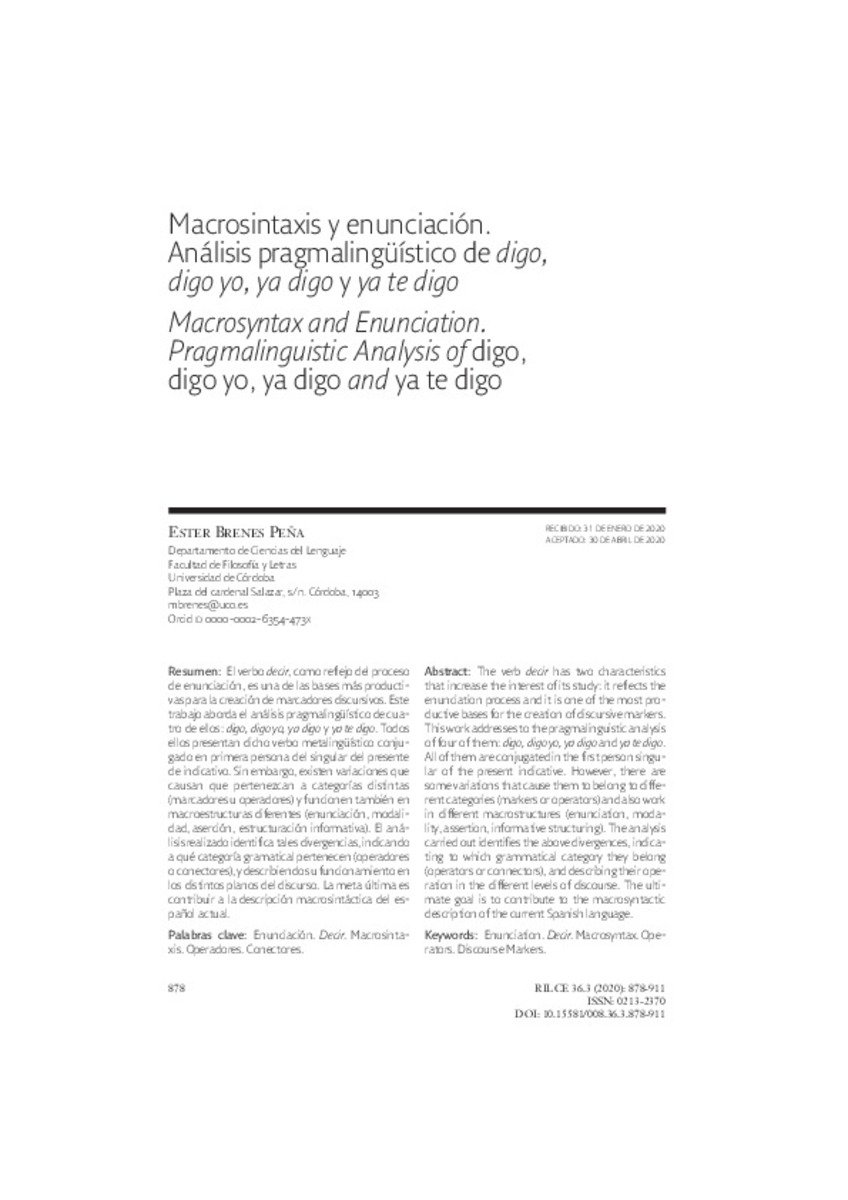Macrosintaxis y enunciación. Análisis pragmalingüístico de «digo», «digo yo», «ya digo» y «ya te digo»
Other Titles:
Macrosyntax and Enunciation. Pragmalinguistic Análisis of «digo», «digo yo», «ya digo» and «ya te digo»
Keywords:
Enunciación
Vervo decir
Macrosintaxis
Operadores
Conectores
Publisher:
Servicio de Publicaciones de la Universidad de Navarra
Citation:
Brenes-Peña, E. (Ester). "Macrosintaxis y enunciación. Análisis pragmalingüístico de «digo», «digo yo», «ya digo» y «ya te digo»". Rilce: Revista de Filología Hispánica. 36 (3), 2020, 878 - 911
Statistics and impact
0 citas en

Items in Dadun are protected by copyright, with all rights reserved, unless otherwise indicated.








